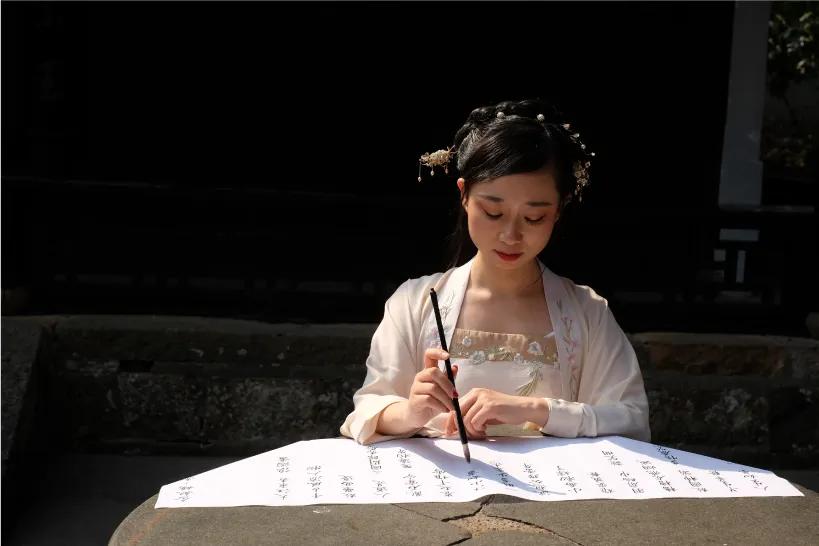Culture, Connection and Communication in the Digital Era: The Case of a Photograph Inspired by an Ancient Poem
The story begins with a caption that sparked conversations that may have potentially led to controversies. Had it not been for a quick clarification and communication that provided a clear cultural context, the situation could have gotten messy. The caption at issue was the title for a photograph on display in an exhibition themed ‘The Art of Storytelling’, curated by the Digital Photography subject convener. What was captured in the elegantly framed photo on exhibit was a visibly weary, dark-skinned migrant worker clad in his uniform, head hung low, seated on the roadside. The composition and colour in the photo instantly evoked a sense of gloom and despair. Upon first glance, the picture moved me to take in the emotion on display and look a little longer, gaze a little deeper. As Peter Adams, the award-winning editorial photographer aptly puts it, “Great photography is about depth of feeling, not depth of field.” As I continued to scrutinise the picture, I felt a sense of discomfort reading the caption posted below it.
“Sympathy for Peasants”. The description, to me, being a Malaysian Indian, felt jarring. To make matters worse, just then, a few students exclaimed in a mocking tone, “Peasants? Seriously?” I felt a deep sense of sadness and became acutely aware of the tinge of anger building up within me. “Let it go,” my heart pleaded. I whipped out my smart phone and posted a story of a few photos from the exhibition that resonated with me on my social media as I carried on with the exhibition. Perhaps that was my way of coping. Perhaps that was my way of letting it go.
But it did not let me go. Within the next few minutes, I had received several notifications on my social media story. A few of my social media friends had noticed the caption on my story and were compelled to message me regarding the title of the photo. One message in particular, stirred me into action: “Well, that’s not the most politically correct title…in such poor taste…the lack of awareness, given the topic’s proximity to the whole migrant worker discourse” (used with permission). I had to do something. I immediately messaged my colleague who was in charge of the exhibition and explained how I felt that the caption was triggering some knee-jerk reactions and responses. I was truthful when I mentioned in my text to him that I personally had felt uncomfortable with the caption.
I was pleasantly surprised by the reply I received – a YouTube link which clarified the inspiration for the photo, and the caption. From the video, I was intuitively led to google the poem, where I learned that ‘Sympathy for Peasants’ (悯 农/ mǐn nóng) is an ancient children’s poem written by Li Shen in the eighth century. I discovered this from Shawn Powrie’s website, where he appositely claims, “I enjoy making the internet more valuable, and I want everything I touch to be great.” Powrie points out that the poem is well-known amongst almost all Chinese people, some of whom have been taught the poem from as young as three. Sympathy for Peasants symbolises gratitude and appreciation for the toil of the farmers who worked hard to grow food for others as they themselves experienced hunger.
Back to the story: My colleague, in his exceptionally professional style, updated me a few minutes after we had exchanged messages that he had now replaced the caption with “Based on the Sympathy for the Peasants, a poem by Li Shen, 772 A.D.” He even sent me a photo of the updated caption via Teams. Then, I proceeded to update, and more importantly, educate my social media friends on this development. The one person whose comment I’ve quoted here’s response, upon realising the connection between the poem and the caption? “Then yes, it does makes sense!” This was a supremely teachable moment for all of us!
This is what communication and connection in the digital age truly means. Where there was once ignorance, misinterpretation, and misunderstanding, now there is knowledge, insight and understanding. A cultural bridge had been built in a matter of minutes, through ‘pressing the right buttons’ (pun intended), thanks to technology.
I end with a quote by Pearl Zhu,
“We all belong to Gen-C: the connecting generation in the digital age.”
Vijaya Sooria Sangaran Kutty
School of Arts
Email: @email
This article was first published in Business Today, 21 August 2022.




